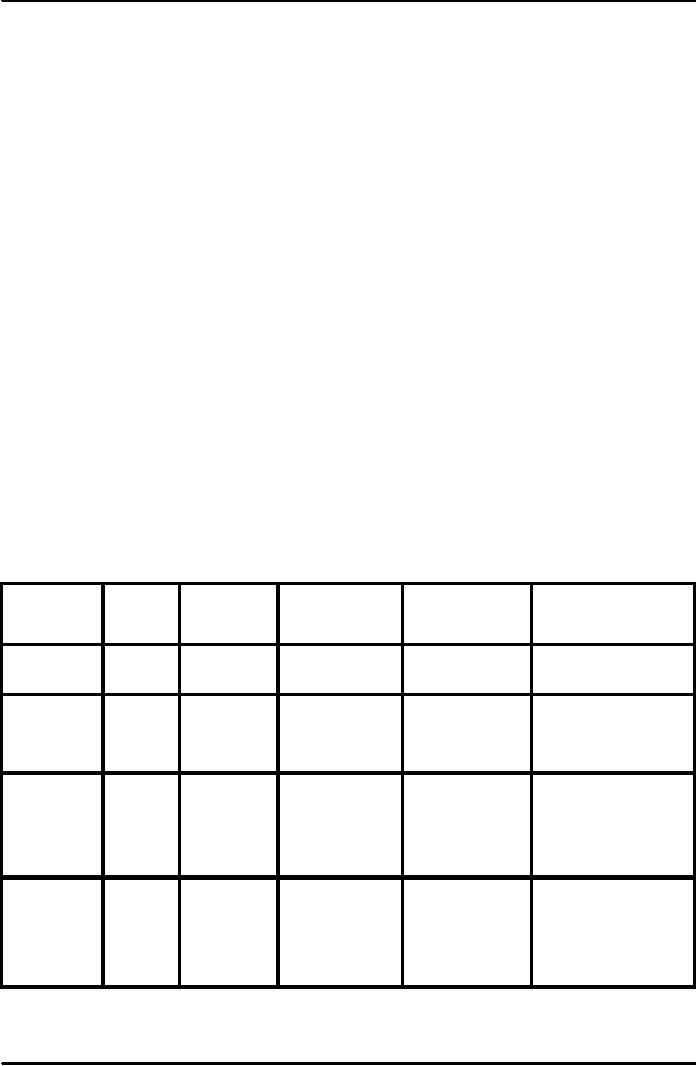 |
MARKET STRUCTURES:PERFECT COMPETITION, Allocative efficiency |
| << BACKGROUND TO SUPPLY/COSTS (CONTINUED…………..):PROFIT MAXIMISATION |
| MARKET STRUCTURES (CONTINUED………..):MONOPOLY >> |

Introduction
to Economics ECO401
VU
UNIT
- 6
Lesson
6.1
MARKET
STRUCTURES
Market
structure refers to how an
industry (broadly called
market) that a firm is
operating in is
structured
or organized.
The
key ingredients of any
market structure
are:
�
Number of
firms in the
market/industry
�
Extent of
barriers to entry
�
Nature of
product
�
Degree of
control over price.
Knowledge
about market structure can
help answer four
questions:
i.
How much profit a firm
will make (normal or
supernormal)
ii.
How much quantity it will
produce at its profit-maximisation
point (i.e. whether it
will
be
a large level of output or a
small one relative to the
market)
iii.
Whether or not a higher
level of output would
increase the cost or
productive
efficiency
of the firm or allocative
efficiency for society (see
the summary on
monopoly
for details)
iv.
Are the prices set
too high, too low, or
just right?
Four
broad market structures have
been identified by
economists:
�
Perfect
competition
�
Monopoly
�
Monopolistic
competition
�
Oligopoly.
Implication
for
Type
of
Number
Freedom of
Nature
of
Examples
demand
curve of
market
of
firms
entry
product
firm
Perfect
Very
Homogenous
Grains
(wheat) or Horizontal; firm is
a
Unrestricted
competition
many
(undifferentiated)
vegetables
price
taker
Downward
sloping but
Monopolistic
Many /
Plumbers,
relatively
elastic; firm
Unrestricted
Differentiated
competition
Several
restaurants
has
some control over
prices.
Downward
sloping
1.
relatively
inelastic but
Cement,
cars,
Oligopoly
or
Undifferentiated
depends
on reactions
electrical
Few
Restricted
or
2.
Cartel
of
rivals to a price
appliance,
oil.
Differentiated
change
Downward
sloping
Restricted
or
more
inelastic than
WAPDA,
or
Monopoly
One
completely
Unique
oligopoly;
firm has
KESC
blocked
considerable
control
over
price
54

Introduction
to Economics ECO401
VU
PERFECT
COMPETITION
The
main assumptions of perfect
competition are:
i.
Large number of buyers
and sellers, therefore firms
price-takers.
ii.
No barriers to entry (also
implies free mobility of
factors of production).
iii.
Identical/homogeneous products.
iv.
Perfect information/knowledge.
The
word perfect
in
perfect competition is not
used its normative sense.
Rather it means that
competition
in the industry is of an extreme
nature. It is used as a benchmark
with which to
compare
other types of market
structures.
Perfect
competition can be thought of as an
extreme
form of capitalism, i.e.
all the firms
are
fully
subject to the market forces
of demand and supply.
Concentration
ratio is used to
assess the level of
competition in an industry. It is simply
the
percentage
of total industry output
that is produced by the 5
largest firms in the
industry.
The
Short Run and Long
Run under Perfect
Competition:
The
short run is the period
where at least one factor of
production is fixed. In perfect
competition,
it
also means that no new
firms can enter the
market. In the long run,
all the factors of
production
are
variable.
Equilibrium
analysis can help us answer
questions about the
market-clearing price and
quantity;
where
the profits are maximized
and how much are
these profits; how
individual firms make
their
short
run supply decisions and
how these translate into
the long-run industry supply
curve.
In
the short run, a perfectly
competitive firm can settle
at an equilibrium where it is making
super
normal
profits, normal profits,
loss, or where it decides to
shut down.
In
the short run, the
firm's supply curve is
identical to the positive
part of MC. The short
run
industry
supply curve is simply the
horizontal summation of the
supply curves of individual
firms.
The
demand (or AR) curve
for
the industry is downward
sloping but for any
individual perfectly
competitive
firm, is horizontal. Thus
the firm can sell as
much at the given market
price. For this
reason,
the AR and MR curves align
under perfect
competition.
In
the long run, any
firm can enter or leave
the industry. If there are
supernormal profits in
the
short
run, more firms will be
attracted to the market and
the increase in supply will
push prices
down
to eliminate supernormal profit
possibilities in the long
run. By contrast, if firms
are making
losses
in the short run, they
will leave the industry in
the long run causing
supply to fall, prices
to
rise
and normal profitability to be
restored. In the long run,
therefore, perfectly competitive
firms
can
only earn normal
profits.
Allocative
Efficiency and Productive
Efficiency:
Public
interest is concerned with
both allocative efficiency
and productive
efficiency.
a.
Allocative
efficiency: The
optimal point of production
for any individual firm is
where
MR=MC.
The optimal point of
production for any society
is where price is equal
to
marginal
cost. This is called the
point of maximum allocative
efficiency and is
achieved
in
perfect competition (because
MR=MC, and MR=AR=P for a
perfectly competitive
price
taking
firm, therefore
P=MC).
b.
Productive
efficiency: This is
attained when firms produce
at the bottom of their
AC
curves,
that is, goods are
produced in the most cost
efficient manner.
Perfectly
competitive
firms also achieve this in
the long run because
they produce at P=MC
and
this
intersection point also
happens to be the point of
tangency with the lowest
part of the
AC
curve. Thus P=
ACminimum.
55
Table of Contents:
- INTRODUCTION TO ECONOMICS:Economic Systems
- INTRODUCTION TO ECONOMICS (CONTINUED………):Opportunity Cost
- DEMAND, SUPPLY AND EQUILIBRIUM:Goods Market and Factors Market
- DEMAND, SUPPLY AND EQUILIBRIUM (CONTINUED……..)
- DEMAND, SUPPLY AND EQUILIBRIUM (CONTINUED……..):Equilibrium
- ELASTICITIES:Price Elasticity of Demand, Point Elasticity, Arc Elasticity
- ELASTICITIES (CONTINUED………….):Total revenue and Elasticity
- ELASTICITIES (CONTINUED………….):Short Run and Long Run, Incidence of Taxation
- BACKGROUND TO DEMAND/CONSUMPTION:CONSUMER BEHAVIOR
- BACKGROUND TO DEMAND/CONSUMPTION (CONTINUED…………….)
- BACKGROUND TO DEMAND/CONSUMPTION (CONTINUED…………….)The Indifference Curve Approach
- BACKGROUND TO DEMAND/CONSUMPTION (CONTINUED…………….):Normal Goods and Giffen Good
- BACKGROUND TO SUPPLY/COSTS:PRODUCTIVE THEORY
- BACKGROUND TO SUPPLY/COSTS (CONTINUED…………..):The Scale of Production
- BACKGROUND TO SUPPLY/COSTS (CONTINUED…………..):Isoquant
- BACKGROUND TO SUPPLY/COSTS (CONTINUED…………..):COSTS
- BACKGROUND TO SUPPLY/COSTS (CONTINUED…………..):REVENUES
- BACKGROUND TO SUPPLY/COSTS (CONTINUED…………..):PROFIT MAXIMISATION
- MARKET STRUCTURES:PERFECT COMPETITION, Allocative efficiency
- MARKET STRUCTURES (CONTINUED………..):MONOPOLY
- MARKET STRUCTURES (CONTINUED………..):PRICE DISCRIMINATION
- MARKET STRUCTURES (CONTINUED………..):OLIGOPOLY
- SELECTED ISSUES IN MICROECONOMICS:WELFARE ECONOMICS
- SELECTED ISSUES IN MICROECONOMICS (CONTINUED……………)
- INTRODUCTION TO MACROECONOMICS:Price Level and its Effects:
- INTRODUCTION TO MACROECONOMICS (CONTINUED………..)
- INTRODUCTION TO MACROECONOMICS (CONTINUED………..):The Monetarist School
- THE USE OF MACROECONOMIC DATA, AND THE DEFINITION AND ACCOUNTING OF NATIONAL INCOME
- THE USE OF MACROECONOMIC DATA, AND THE DEFINITION AND ACCOUNTING OF NATIONAL INCOME (CONTINUED……………..)
- MACROECONOMIC EQUILIBRIUM & VARIABLES; THE DETERMINATION OF EQUILIBRIUM INCOME
- MACROECONOMIC EQUILIBRIUM & VARIABLES; THE DETERMINATION OF EQUILIBRIUM INCOME (CONTINUED………..)
- MACROECONOMIC EQUILIBRIUM & VARIABLES; THE DETERMINATION OF EQUILIBRIUM INCOME (CONTINUED………..):The Accelerator
- THE FOUR BIG MACROECONOMIC ISSUES AND THEIR INTER-RELATIONSHIPS
- THE FOUR BIG MACROECONOMIC ISSUES AND THEIR INTER-RELATIONSHIPS (CONTINUED…….)
- THE FOUR BIG MACROECONOMIC ISSUES AND THEIR INTER-RELATIONSHIPS (CONTINUED…….):Causes of Inflation
- THE FOUR BIG MACROECONOMIC ISSUES AND THEIR INTER-RELATIONSHIPS (CONTINUED…….):BALANCE OF PAYMENTS
- THE FOUR BIG MACROECONOMIC ISSUES AND THEIR INTER-RELATIONSHIPS (CONTINUED…….):GROWTH
- THE FOUR BIG MACROECONOMIC ISSUES AND THEIR INTER-RELATIONSHIPS (CONTINUED…….):Land
- THE FOUR BIG MACROECONOMIC ISSUES AND THEIR INTER-RELATIONSHIPS (CONTINUED…….):Growth-inflation
- FISCAL POLICY AND TAXATION:Budget Deficit, Budget Surplus and Balanced Budget
- MONEY, CENTRAL BANKING AND MONETARY POLICY
- MONEY, CENTRAL BANKING AND MONETARY POLICY (CONTINUED…….)
- JOINT EQUILIBRIUM IN THE MONEY AND GOODS MARKETS: THE IS-LM FRAMEWORK
- AN INTRODUCTION TO INTERNATIONAL TRADE AND FINANCE
- PROBLEMS OF LOWER INCOME COUNTRIES:Poverty trap theories: